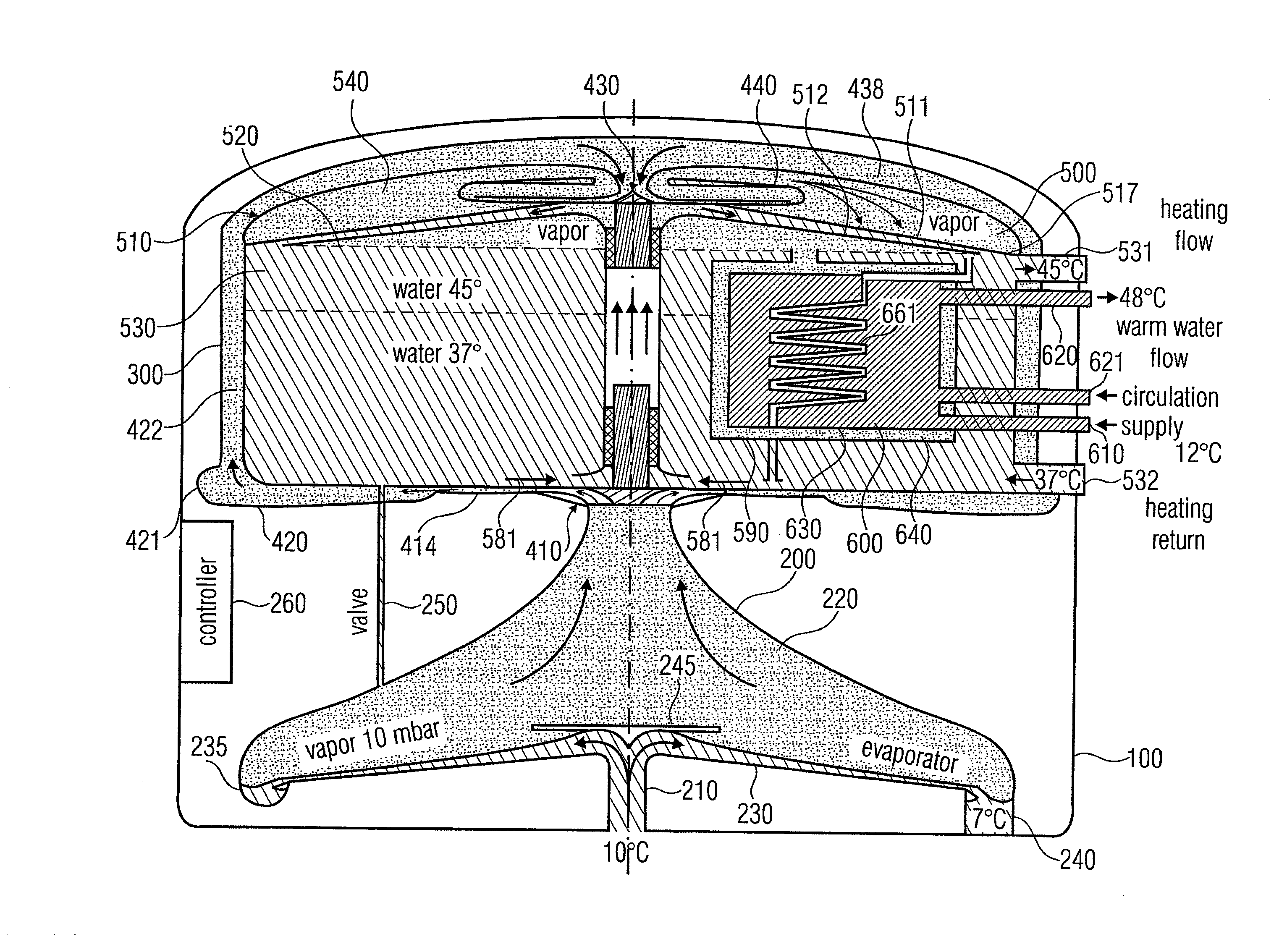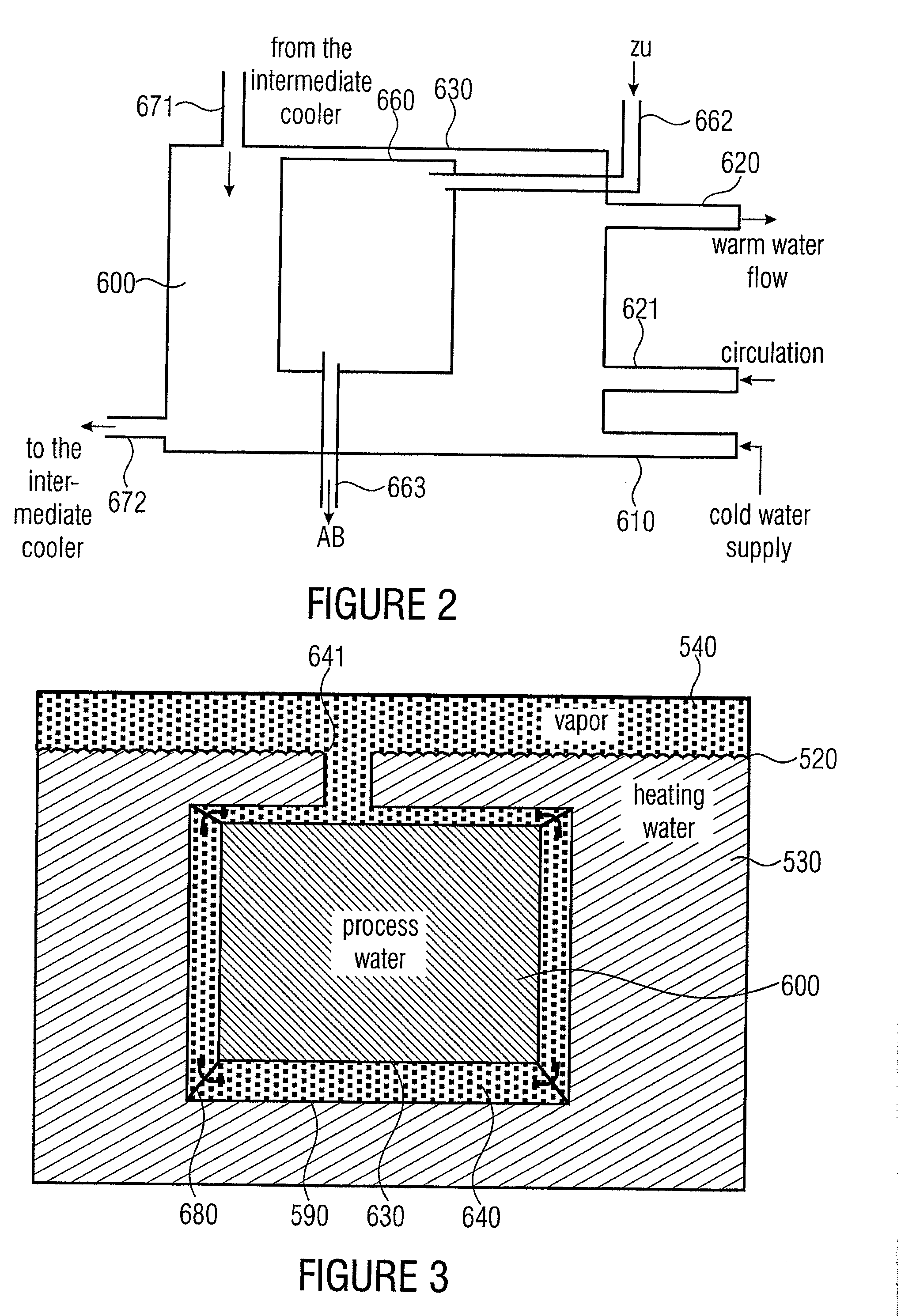Liquefier for a Heat Pump and Heat Pump
a heat pump and liquefier technology, applied in the field of heat pumps, can solve the problems of not reducing the overall efficiency of the heat pump, heat loss via the process water tank is especially disadvantageous, and the space for insulating materials is not large enough, so as to achieve the effect of better insulation
- Summary
- Abstract
- Description
- Claims
- Application Information
AI Technical Summary
Benefits of technology
Problems solved by technology
Method used
Image
Examples
Embodiment Construction
[0039]FIG. 1 shows a schematic cross-sectional view of a heat pump in which a liquefier may be employed advantageously. The heat pump includes a heat pump housing 100 comprising, in a setup direction of the heat pump from the bottom to the top, first an evaporator 200 and a liquefier 300 above it. Furthermore, a first compressor stage 410 feeding a first intermediate cooler 420 is arranged between the evaporator 200 and the liquefier 300. Compressed gas output from the intermediate cooler 420 enters a second compressor stage 430 and there is condensed and supplied to a second intermediate cooler 440, from which the compressed, but intermediately cooled gas (vapor) is fed to a liquefier 500. The liquefier has a liquefier space 510, which comprises a working fluid space filled with liquefied working fluid, such as water, up to a filling level 520. The liquefier 500 and / or the liquefier space 510 are limited to the outside by a liquefier wall 505, which provides a lateral boundary of t...
PUM
| Property | Measurement | Unit |
|---|---|---|
| angle | aaaaa | aaaaa |
| pressure | aaaaa | aaaaa |
| pressure | aaaaa | aaaaa |
Abstract
Description
Claims
Application Information
 Login to View More
Login to View More - R&D
- Intellectual Property
- Life Sciences
- Materials
- Tech Scout
- Unparalleled Data Quality
- Higher Quality Content
- 60% Fewer Hallucinations
Browse by: Latest US Patents, China's latest patents, Technical Efficacy Thesaurus, Application Domain, Technology Topic, Popular Technical Reports.
© 2025 PatSnap. All rights reserved.Legal|Privacy policy|Modern Slavery Act Transparency Statement|Sitemap|About US| Contact US: help@patsnap.com



